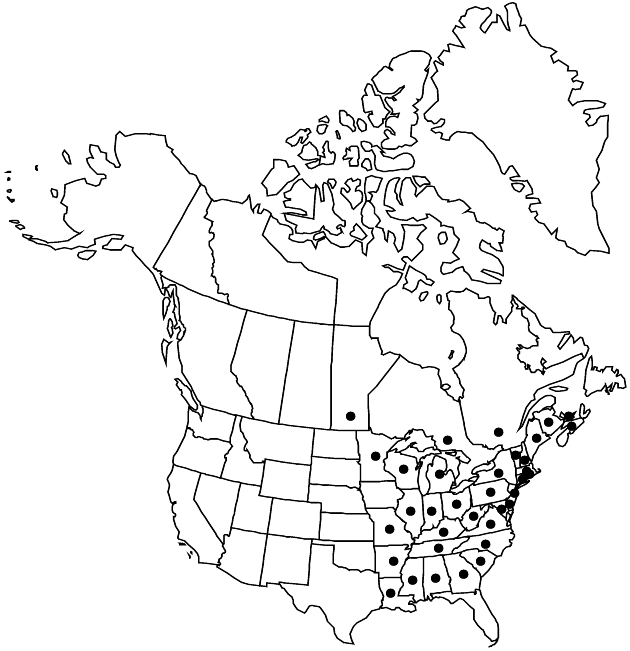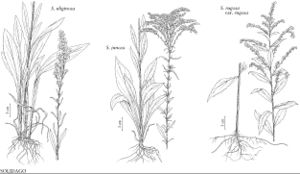Solidago juncea
Hort. Kew. 3: 213. 1789.
Plants 30–120 cm; caudices branching, sometimes with elongate rhizomes forming new rosettes. Stems 1–10+, erect, glabrous, sometimes sparsely hairy in arrays; usually with fascicles of small leaves in axils of distal leaves. Leaves: basal and proximal cauline tapering gradually to winged petioles, blades oblanceolate to ovate, 100–300 × 20–70 mm, usually multiple lateral nerves pronounced, margins sharply serrate, ciliate, faces glabrous; mid to distal cauline sessile, blades linear-lanceolate, 30–50 × 8–11 mm, reduced distally, margins entire or finely serrate. Heads 60–450, secund, in paniculiform arrays, openly secund-pyramidal with proximal branches spreading-recurved, or as broad as long with proximal branches widely ascending, recurved (elm-tree shaped). Peduncles 1.5–6 mm, glabrous or sparsely strigillose; bracteoles 0–2, linear. Involucres narrowly campanulate, 3–4 mm. Phyllaries in 3–4 series, strongly unequal, outer ovate, acute, inner lanceolate, obtuse. Ray-florets 7–12; laminae 2–2.5 × 0.2–0.5 mm. Disc-florets 8–15; corollas 2.5–3 mm, lobes 0.5–0.8 mm. Cypselae 0.9–1.5 mm, sparsely strigose; pappi 2.5–3.5 mm. 2n = 18.
Phenology: Flowering Jul–Sep.
Habitat: Open sandy soils, disturbed areas, fields
Elevation: 0–1000+ m
Distribution

Man., N.B., N.S., Ont., P.E.I., Que., Ala., Ark., Conn., Del., Ga., Ill., Ind., Ky., La., Maine, Md., Mass., Mich., Minn., Miss., Mo., N.H., N.J., N.Y., N.C., Ohio, Pa., R.I., S.C., Tenn., Vt., Va., W.Va., Wis.
Discussion
Several varieties of Solidago juncea have been described; they do not appear to warrant recognition, each grading into the other.
Selected References
None.
